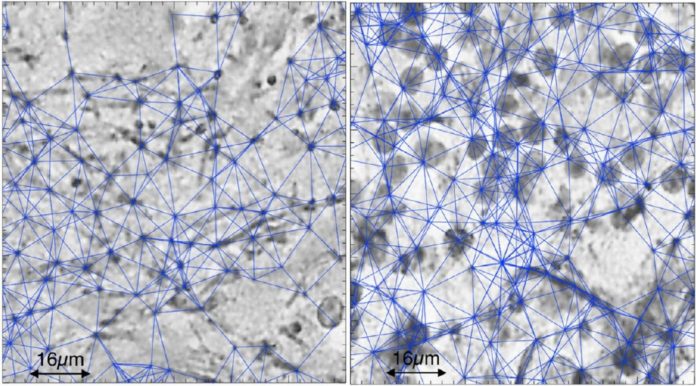Italian scientists have found striking similarities when comparing the network of neural cells in the human brain with the cosmic network of galaxies in the universe.
Franco Vazza, an astrophysicist at the University of Bologna, and Alberto Feletti, a neurosurgeon at the University of Verona, have investigated the similarities between them, which are two of nature’s most complex and challenging systems.
The study published in an article in Frontiers suggests that, despite the significant difference in size between the two networks – equivalent to more than 27 orders of magnitude – the different physical processes can build structures characterized by similar levels of complexity and self-organization.
It is known that our brain has an extensive neural network, which is estimated to be composed of about 69 billion neurons. Similarly, the observable universe consists of a cosmic network of at least 100 billion galaxies.
In both systems, only 30% of their masses are made up of galaxies and neurons. On the other hand, in both structures, 70% of the mass or energy distribution is composed of components that play a seemingly passive role: water in the brain and dark energy in the universe. In addition, in both cases, galaxies and neurons are organized in a similar way, in long filaments or nodes between the filaments.
Based on the characteristics shared between the two systems, the researchers conducted a comparison between a simulation of the galaxy network with sections of the cerebral cortex and cerebellum. The objective of the experiment was to study how fluctuations in matter are dispersed on such diverse scales.
“Our analysis showed that the distribution of the fluctuation within the cerebellum neuronal network on a scale from 1 micrometer to 0.1 millimeters follows the same progression of the distribution of matter in the cosmic web but, of course, on a larger scale that goes from 5 million to 500 million light-years”
Vazza explained.
In addition, when calculating the average number of connections in systems, scientists found “unexpected levels of similarity.”
“Probably, the connectivity within the two networks evolves following similar physical principles, despite the striking and obvious difference between the physical powers regulating galaxies and neuron”
added Feletti.
Vazza and Feletti’s findings suggest that new and effective analysis techniques, both in cosmology and neurosurgery, will allow a better understanding of the dynamics underlying the temporal evolution of these two systems.
